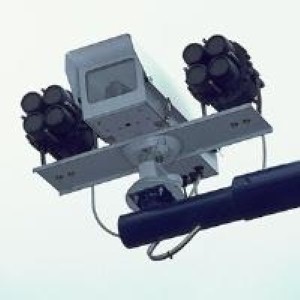IP camera, which is a typical digital video camera, is functionally employed for video surveillance. Such devices can transact data via computer networks and the internet. These cameras are operated on a platform of discrete software, popularly known as IP video surveillance software.
 This software is used for managing video monitoring, analysis, and automation of the IP camera. It primarily integrates IP video surveillance with other applications in an IT environment.
This software is used for managing video monitoring, analysis, and automation of the IP camera. It primarily integrates IP video surveillance with other applications in an IT environment.
It includes access control systems, gate barriers, license plate recognition solutions, and sprinklers. Its functions can be elaborated as follows.
- Monitoring from an internet device
- Video analytics
- Automated alerts
- Enhances export of videos
- Time management
- Data traffic management
How does IP-based video surveillance functions
The IP digital camera and CCTV installation security systems view the ongoing things in front of it, broadcast those packetized video streams as a signal over a local area network line, then transmit them to a computer system or a server. The server then after handles all this data.
The IP video surveillance software installed within the system then manages the digital images by displaying and retransmitting the images anywhere across the world. The software package can be easily upgraded to a customized one for selecting and analyzing flagged items to be watched and a host of other functions.
Benefits of IP surveillance and Video Management System (VMS)
Digitization offers a lot of benefits over analog. IP-based surveillance software integrated into the systems is, so far, the latest technology for the users in terms of money and security.
The popularity of surveillance systems has earned a foothold across the world.
- Improved search capability
- Easy to operate
- Qualitative images
- Non-degradation of video feeds
- Recording and playing simultaneously
- Content compression with better storage facilities.
- Enhanced remote viewing and control over the network
- Ease of distribution of images.
- Connection to communication systems and automation of sending information.
- Coaxial cable is not necessary
- Cost-effective
VMS is the hub where all the functions of the IP cameras, such as the acceptance of video signals, their storage, and telecast of the images, are taken care of. It consists of the following subsystems:
- Digital video recorders (DVRs) accept analog feeds and supports remote viewing of videos over IP.
- Hybrid DVRs support the recording and viewing of videos obtained from analog and IP cameras.
- Network Video recorders (NVRs) accept videos from network cameras for which an encoder is used.
- IP video surveillance software gives the configuration ability to the administrator by offering a set of controls over the surveillance cameras.
Applicability of IP video surveillance
In the wake of an unpredictable series of natural and man-made disasters, today, the emphasis is on public safety and asset protection worldwide. Therefore, government agencies and private concerns are looking for tech-driven and reliable surveillance systems.
IP cameras and CCTV security systems are being used in almost all places – Municipalities, healthcare units, retail businesses, factory floors, homes, apartments, real estate, schools, colleges, financial institutions, transportation centers, freight, airports, railway stations, traffic management, ports, intelligence units, defense, research, corporate offices and many more.
The IP video surveillance software installed into the Video management system enhances the usage of surveillance systems in all sectors of the economy.